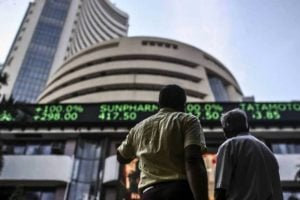In September 2024, the Sensex reached an all-time high of 85,978. Following this peak, the index declined by 16.92 percent to a low of 71,425. Recently, however, the Sensex rebounded, climbing to a near high of 82,718, narrowing the gap to just a 3.79 percent decline from its 52-week peak.
The Sensex fell after reaching its all-time high of 85,978 in September 2024 due to several factors, including profit-taking by investors, global economic uncertainties, rising inflation concerns, and geopolitical tensions that dampened market sentiment. Additionally, foreign institutional investors (FIIs) engaged in significant selling, and tightening monetary policies by central banks, along with worries about slowing economic growth, further pressured the market.
The recovery was likely driven by a better global economic outlook, signs that inflation was slowing down, and hopes that interest rates might be cut in the future. Strong domestic economic data, a return of foreign investors buying, as India’s growth story stayed attractive
Also read: How India Plans to Hit ₹3 Lakh Cr Defence Production and ₹50,000 Cr Defence Exports by 2029
SENSEX 1 Lakh Target
Global investment firm Morgan Stanley has set a new base case target for the Sensex at 89,000 by June 2026. In a more optimistic bull case scenario, the firm sees the Sensex reaching the 1 lakh mark, assigning a 30 percent probability to this outcome.
Morgan Stanley had previously set a target of 82,000 for the Sensex by December 2025. However, the firm has now revised its target to 89,000 for June 2026, assigning a 50 percent probability to achieving this milestone. This projection is based on assumptions of sustained domestic growth, no recession in the U.S., and stable oil prices.
For the Sensex to reach 1 lakh within 12 months, Morgan Stanley outlines several key conditions: oil prices must consistently stay below $65 per barrel, GST rates should be reduced, progress must be made on agricultural reforms, earnings growth should achieve a compound annual growth rate (CAGR) of 19 percent, and there should be relief from ongoing global trade tensions.
Further, even after recent escalations in tensions with Pakistan and the ongoing risk of tariffs linked to President Trump’s policies, the Indian markets have remained remarkably resilient. Investors have continued to show confidence, supported by strong domestic fundamentals and positive economic indicators, which have helped the markets withstand these geopolitical and trade-related challenges.
Written By Abhishek Das
Disclaimer

The views and investment tips expressed by investment experts/broking houses/rating agencies on tradebrains.in are their own, and not that of the website or its management. Investing in equities poses a risk of financial losses. Investors must therefore exercise due caution while investing or trading in stocks. Dailyraven Technologies or the author are not liable for any losses caused as a result of the decision based on this article. Please consult your investment advisor before investing.




